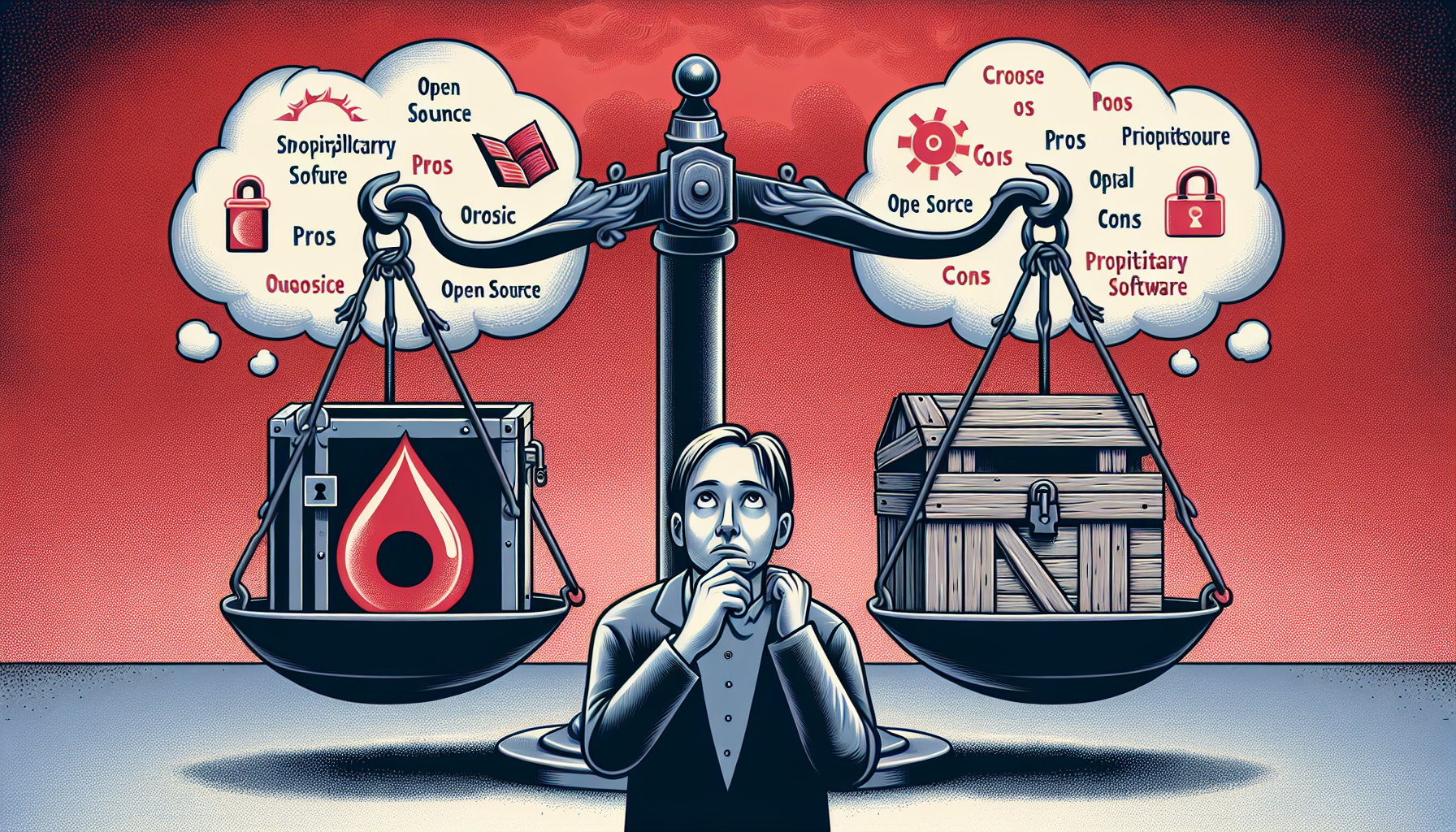Open Source vs Proprietary Software: Which Should You Choose?

In the digital age, choosing the right type of software can significantly impact your business operations, development processes, and overall efficiency. The two main categories of software are open source and proprietary software. Each has its unique advantages and disadvantages, making the decision not only a technical one but also a strategic one. This article delves into the differences between open source and proprietary software, helping you make an informed choice.
Understanding the Basics
Open Source Software
Open source software is software with source code that anyone can inspect, modify, and enhance. These programs are usually developed collaboratively and are distributed under licenses that comply with the Open Source Definition. Popular examples include Linux, Apache, and Mozilla Firefox.
Key Characteristics of Open Source Software:
- Transparency: Users can view and modify the source code.
- Community Support: Large communities offer support, updates, and improvements.
- Cost-Effective: Generally free to use, reducing upfront costs.
- Flexibility: Easily customizable to suit specific needs.
Proprietary Software
Proprietary software, on the other hand, is owned by an individual or a company. The source code is kept secret, and users must purchase licenses to use the software. Microsoft Windows, Adobe Photoshop, and macOS are prime examples.
Key Characteristics of Proprietary Software:
- Controlled Environment: The source code is not accessible to users.
- Official Support: Companies provide professional support and regular updates.
- Integrated Features: Often comes with a range of built-in features and functionalities.
- Security: Managed by the company, reducing the risk of vulnerabilities.
Comparison Table
To better understand the differences, here is a comparison table highlighting the key aspects of open source and proprietary software:
| Feature | Open Source Software | Proprietary Software |
|---|---|---|
| Cost | Generally free | License fees required |
| Customization | Highly customizable | Limited customization |
| Support | Community-based, varied quality | Professional, consistent |
| Security | Open to vulnerabilities if not managed | Controlled, but depends on the vendor |
| Innovation | Fast-paced, community-driven | Vendor-driven, can be slower |
| Updates | Frequent, community-contributed | Scheduled by vendor |
| Licensing | Flexible, open licenses | Strict, proprietary licenses |
Pros and Cons
Open Source Software
Pros:
- Cost-Effective: Most open source software is available for free, making it an attractive option for startups and small businesses.
- Customizability: Users can tailor the software to meet their specific needs.
- Community Support: A vast community of developers contributes to and supports open source projects.
Cons:
- Support Quality: The quality of community support can vary.
- Complexity: May require technical expertise to install and maintain.
- Security Risks: Open code can potentially expose vulnerabilities.
Proprietary Software
Pros:
- Reliability: Comes with vendor support, ensuring reliability and consistent updates.
- Ease of Use: Generally more user-friendly with comprehensive documentation.
- Security: Vendors often prioritize security in their software offerings.
Cons:
- Cost: Licensing fees can be expensive.
- Limited Customization: Users are restricted in terms of modifying the software.
- Vendor Lock-in: Dependence on a single vendor can be risky if the vendor discontinues the product.
Code Snippets
To illustrate the flexibility and accessibility of open source software, consider the following example of a simple script written in Python, an open source programming language:
# Python program to print "Hello, World!"
def greet():
print("Hello, World!")
if __name__ == "__main__":
greet()
This simple script demonstrates how easily you can write, modify, and execute code using open source tools. In contrast, proprietary software often involves more restrictions and a steeper learning curve.
Making the Decision: Which Should You Choose?
Choosing between open source and proprietary software depends on several factors, including budget, technical expertise, and specific business needs.
Consider Open Source Software If:
- You have a limited budget.
- Customization is crucial for your operations.
- You have access to technical expertise or are willing to invest in training.
Consider Proprietary Software If:
- You need reliable, professional support.
- Your focus is on user-friendliness and ease of integration.
- You prefer a more controlled and secure environment.
Conclusion
Both open source and proprietary software have their unique strengths and weaknesses. Open source software offers flexibility and cost savings but requires technical skills and careful management. Proprietary software provides ease of use, professional support, and security but can be costly and restrictive.
To make the best decision, evaluate your organization’s specific needs, resources, and long-term goals. By understanding the differences and weighing the pros and cons, you can select the software type that aligns with your business strategy and drives success.





0 thoughts on “Open Source vs Proprietary Software: Which Should You Choose?”